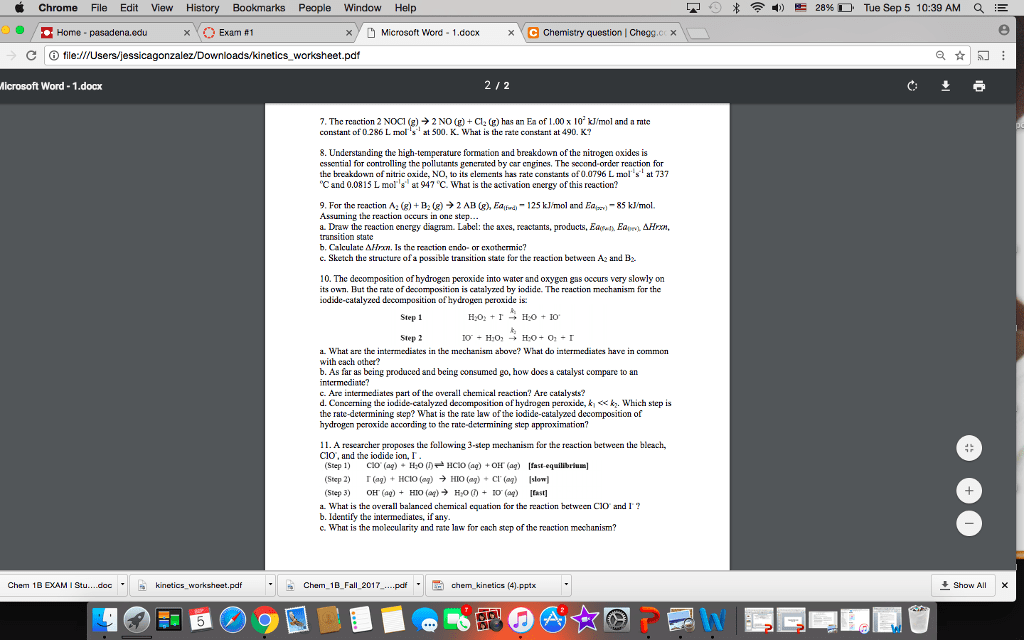MBB 321 Lecture 3: Lecture 3 - Review of Enzymes
Document Summary
Enzymes: biological molecules which catalyze reactions by lowering the activation energy of the transition state. Catalyst: a substance that increases the rate of a chemical reaction without itself being changed in the overall. If an enzyme is denatured or dissociated into its component amino acids, the catalytic activity is destroyed. Enzyme activity is dependant on temperature and ph, because each specific enzyme has a particular temperature and ph where enzyme activity is optimal. Activation energy ( g): the difference between the energy levels of the ground state and the transition state. Transition state: the precise point in the reaction pathway that has the highest. Reaction intermediates: any species on the reaction pathway that has a finite. The overall rate is determined by the step with the highest activation energy and is. A prosthetic group is a coenzyme that is tightly bounded to an enzyme. Several different enzymes can use the same coenzyme.


